Listen to this article:
Key Takeaway
To enhance comfort and prevent injury in kneeling yoga poses, use proper padding like a thick mat, folded blanket, or knee pads, and respect your body’s limitations by adjusting poses as needed.
Do you have sensitive knees, or do you find the kneeling position uncomfortable?
If so, you probably dread doing yoga poses like cat-cow, camel, or low lunge.
The kneeling position can stress the knee joint significantly, and these asanas feel uncomfortable and painful for many yogis.
However, if this is the case for you, you don’t have to skip every yoga kneeling pose. Instead, you can make this position safer and more comfortable in several ways, which we will cover in this article.
And be sure to read until the end, as we’ll cover the 10 most common kneeling yoga poses in yoga and how to do them.
Let’s dive in!
Contents
How To Protect Your Knees In Kneeling Yoga Poses

Kneeling poses, like the Hero pose, involve a high degree of knee flexion, and asanas like Camel require you to put your entire body weight on these sensitive joints. So it’s no surprise that knee injuries are among the most common yoga injuries.
The key to taking care of your knee joints during kneeling yoga poses is to use extra padding. Here are three ways you can do this:
Use a thick mat
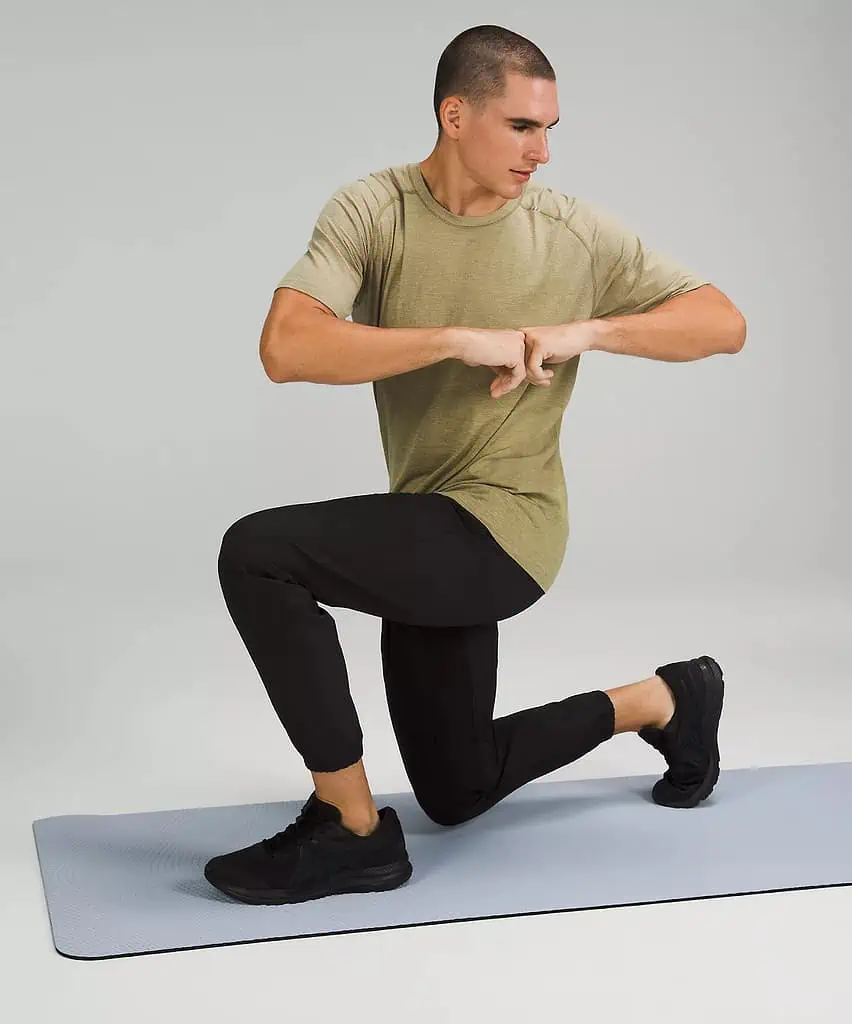
If you feel slight discomfort in kneeling yoga poses, switching to a thicker mat may be enough. Yoga mat thickness can range from 1mm to 10mm, so if you are using one that is just a couple of mm thick, this could be what is causing the painful sensation.
Now, it’s also worth noting that when yoga mats are too thick, it reduces stability and balance in standing poses. Thus, 6mm thickness is an ideal balance; it is thick enough to protect the knees but thin enough to keep you sturdy and centered in balanced poses.
I use the 6mm Lululemon Workout Mat, which has a unique design where the center of the mat (where your knees usually are) is smooth, while the top and bottom have a raised, grippy textural surface to increase traction and stability. Plus, as it’s double-sided, the other side has a smooth texture.
Use a folded blanket

For extra-sensitive knees, a thicker mat may not be enough support. So I recommend getting a dense yoga blanket that you can fold up and place under your knees whenever you come into a kneeling yoga pose.
Restorative yoga blankets are perfect as they are heavy, thick, soft, and comfortable. I like the Manduka Yoga Wool Blanket, made from 100% sustainable materials (75% recycled wool and 25% recycled synthetic fibers). It is exceptionally high quality and long-lasting thanks to the overlocked edge stitching that prevents fraying and the dense weaving that keeps it in shape after multiple washes.
Use yoga knee pads
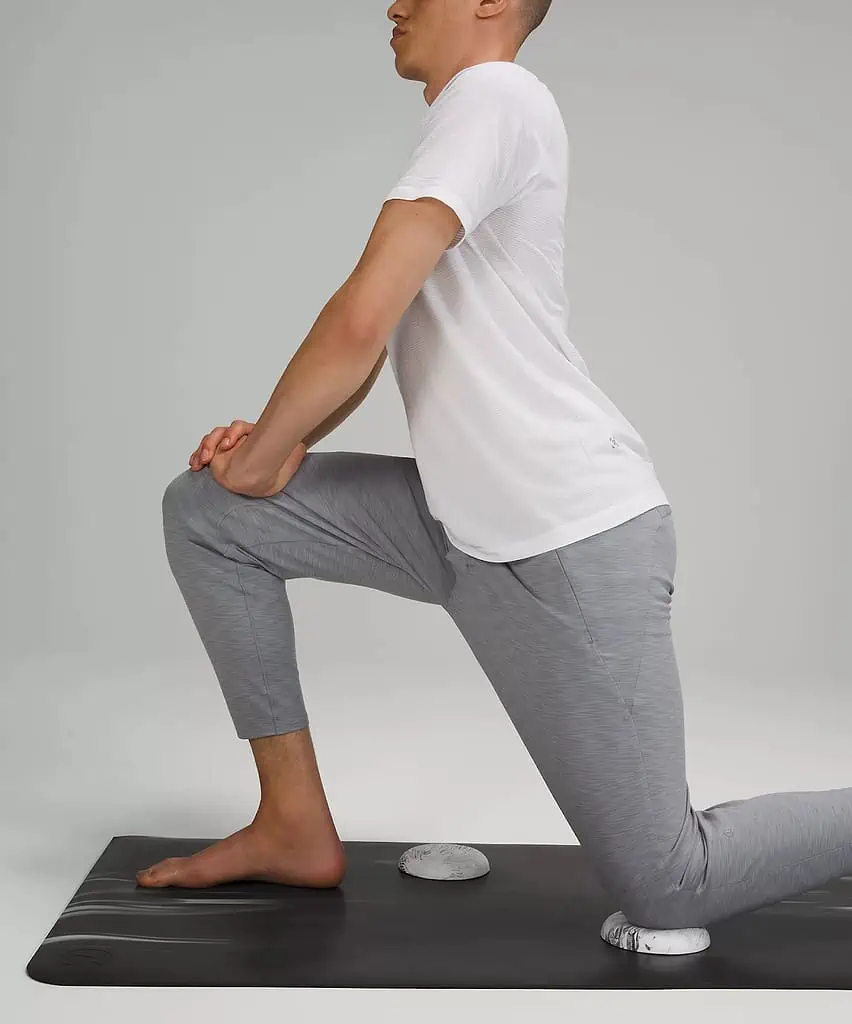
An alternative to a blanket is yoga knee pads, a product designed to prevent pain and discomfort in yoga practice.
The Lululemon Stackable Foam Yoga Pads are small cushioned pads that you place under your knees in any kneeling pose for instant support and comfort. As they are stackable, you can use one, two, or three per knee, depending on your needs. They also have a suctioning design, so they stay firmly in place on your mat.
Additional tip – Respect your body’s limitations
Along with using prop support, being mindful and respectful of what your body can and cannot do is essential for preventing knee injuries in yoga.
For example, some poses require high knee flexion, but this is inaccessible for people with low mobility in the knee joint. If you try to bend your knee more than it can, you risk twisting the joint out of alignment.
So rather than pushing and pulling your body, reduce the degree of flexion. For example, in the Hero pose, sit on one or two blocks to elevate the hips and lower the bend in the knee.
In addition, move in and out of kneeling yoga poses slowly and carefully to avoid accidentally bending the knee too much or too quickly. In a low lunge pose where the front knee is bent, be careful not to bend the knee too much so that it goes past your toes. This is one of the most common causes of knee injuries.
Yoga Knee Care Techniques for Injury Prevention
10 Kneeling Yoga Poses And How To Do Them
Kneeling yoga poses are often practiced in the warm-up part of a yoga sequence, helping the body prepare for the standing postures. However, they can also be sprinkled throughout the practice as resting poses or cool-down postures at the end.
Let’s explore the most common kneeling poses in Hatha and Vinyasa yoga.
Hero Pose
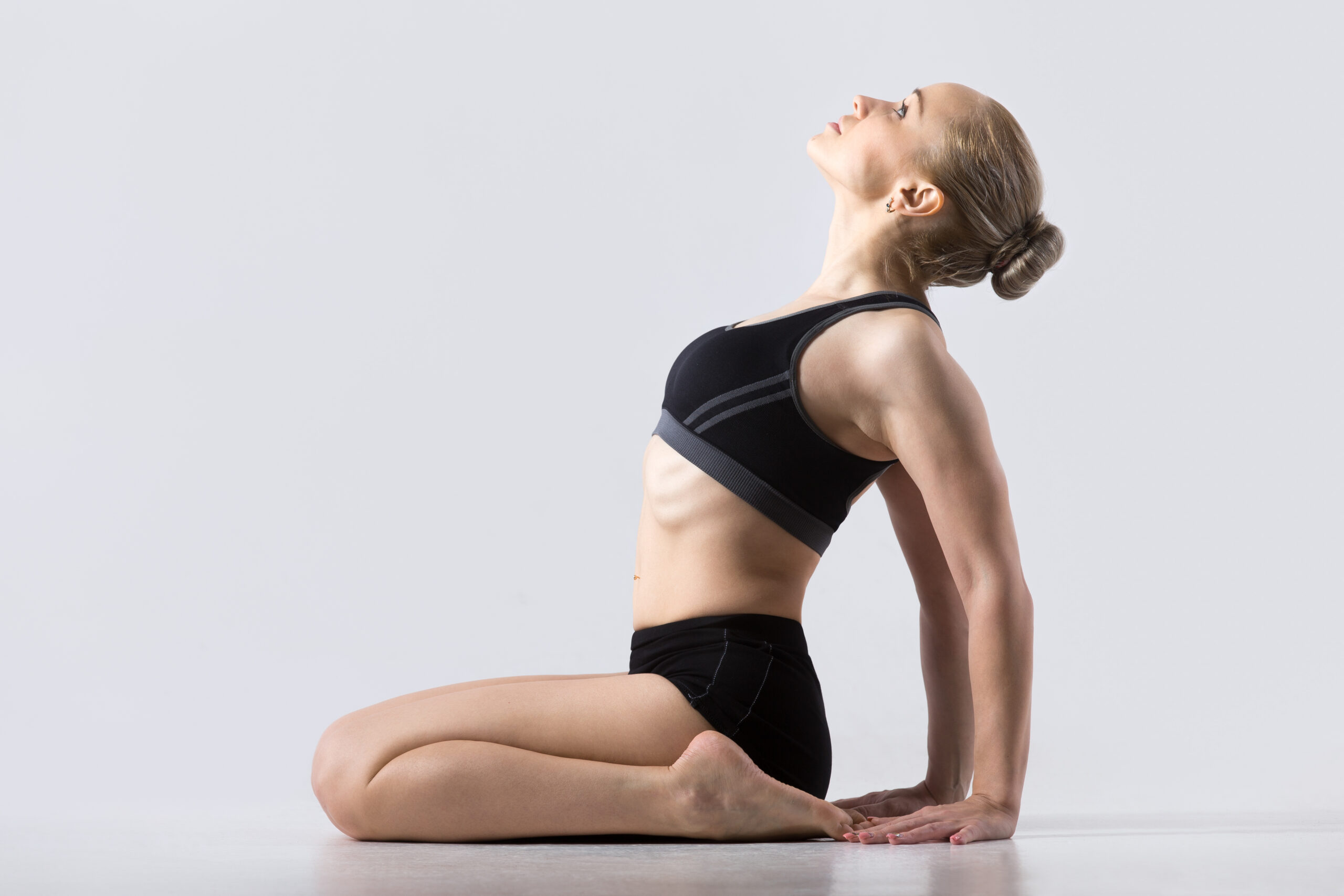
Virasana, or Hero Pose, is a seated yoga posture that is best practiced gradually for maximum comfort and effectiveness. Start on all fours, then progressively expand your feet and draw your knees closer together. Sitting between your heels on the mat or with supports to support you, lower your hips back.
To adjust, roll the calf flesh aside, engage the core, and extend the spine. After holding this position for five to ten breaths, come out of it by going back to your starting all-fours position.
For novices, practicing with one leg at a time and elevating the hips with blocks or cushions will help reduce discomfort and help you gradually lengthen the posture. Strains can be lessened by supporting swollen ankles with a rolled blanket.
Insist on applying pressure through the inner ankles and the tops of the feet. Hero Pose has several advantages, such as stretching the legs, knees, ankles, and tops of the feet. It also revitalizes achy legs and is a great meditation substitute for the Lotus pose.
Thunderbolt Pose
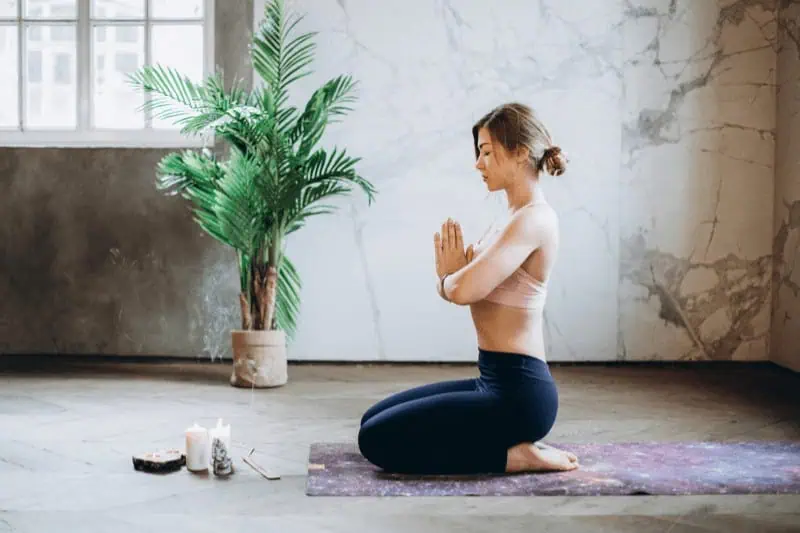
“Vajra,” which means thunderbolt or diamond, is combined with “asana,” which means posture or position. The shape’s similarity to a diamond or thunderbolt gives rise to the name “Vajrasana.”
Maintaining your knees, legs, and feet together, sit on your heels. Keep your back straight and rest your palms above your thighs. Take a gentle breath through your nose and hold it there. Also known as the Adamantine Pose, it is beneficial for meditation and helps with digestion.
If sitting on your heels is uncomfortable, try putting a pillow or cushion between your thighs and heels for a more comfortable version. If you feel that your lower extremities are not getting enough blood, you must release the pose quickly.
To make the pose more intense, flex your toes while sitting on your heels in this yoga stance. This raises the difficulty of the position by giving the toes a deep stretch.
Child Pose
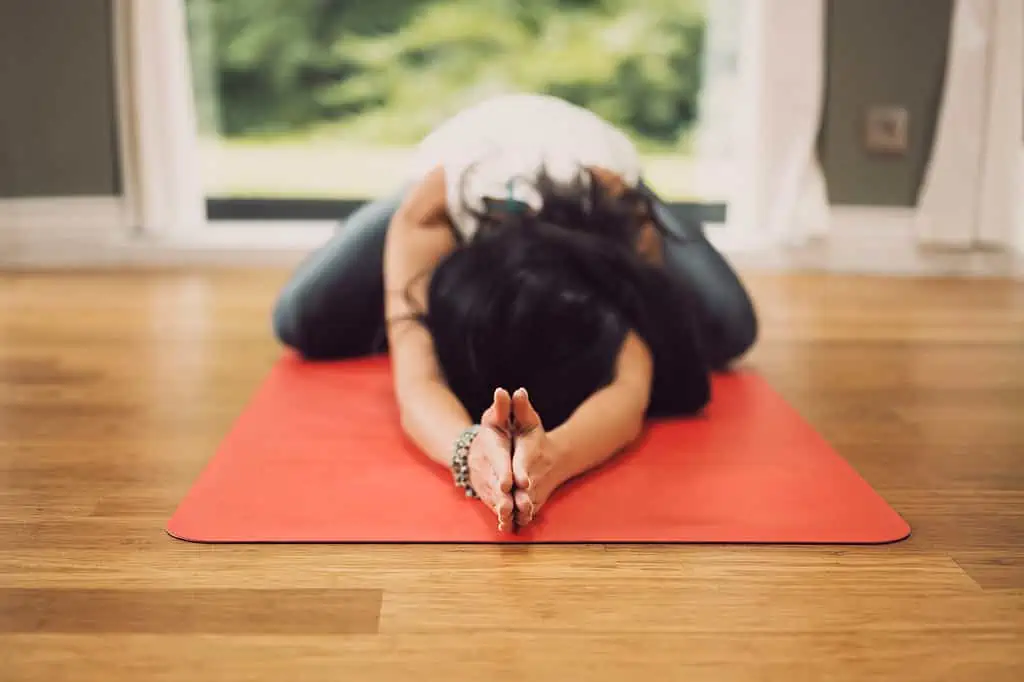
The common resting asana, Child pose, involves deep knee flexion, spinal flexion, and hip opening. You can do this posture with the knees together (which compresses the abdominal organs and stimulates digestion) or with the knees apart (for a deeper hip stretch).
When coming into the child pose, start sitting on your heels in a hero pose. Then, tilt forward from your hips to lower your torso on or between your thighs. Keep your hips pressing down to your heels as you come into the pose, and relax your forehead to the ground.
Cow Pose

Cow pose is a gentle backbend practiced in a tabletop position on the hands and knees. For any pose in a tabletop position, ensure your knees are directly under your hips and your wrists are under your shoulders. From this position, tilt your pelvis to arch your back and open your chest, gazing forward.
Cat Pose
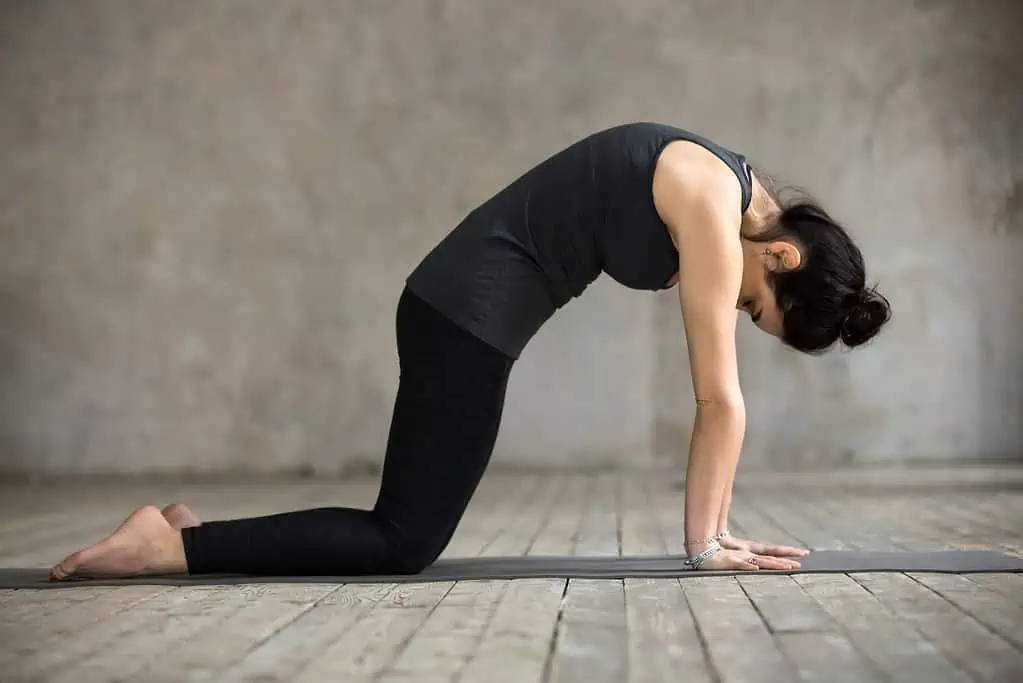
Cat pose almost always comes after cow pose, with cat and cow practiced together in a series of rounds. While the cow pose extends the spine and stretches the front body, the cat pose flexes it and stretches the back. From cow pose, tuck your tailbone to round your back and tuck the chin to your chest.
Balancing Table Pose
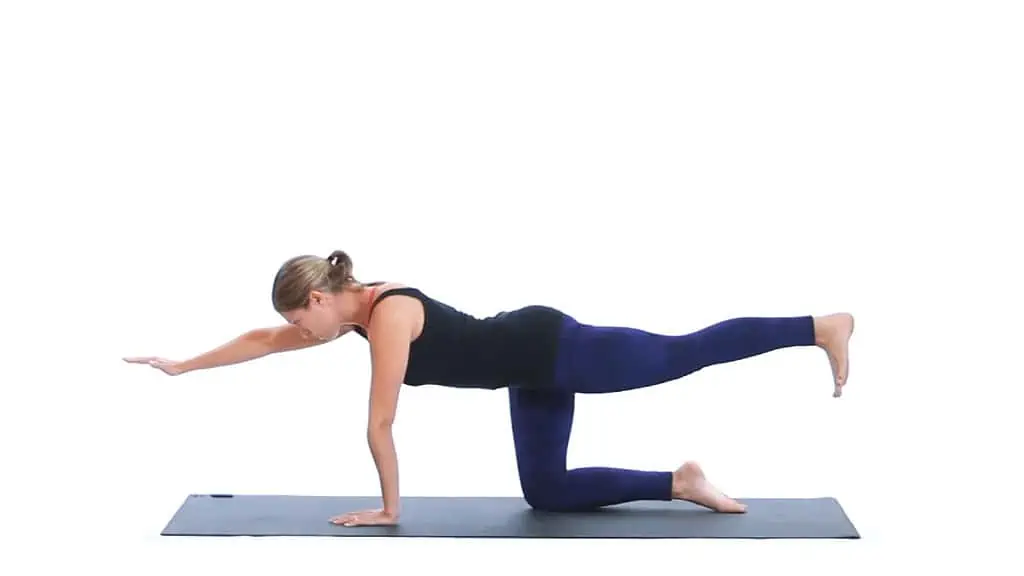
Balancing table pose is another asana practiced from the tabletop position. However, this particular pose works on engaging and strengthening the core muscles and improving balance and stability in the body.
This yoga pose involves balancing your weight on one knee and one hand, which increases the weight on that particular knee. Thus, I recommend using props to keep your knees safe.
Extend your right leg back and left arm forward from all fours. Keep the floating arm and leg straight, and engage the core as you hold. Release, then repeat on the other side, extending the left leg and right arm.
Low Lunge Pose
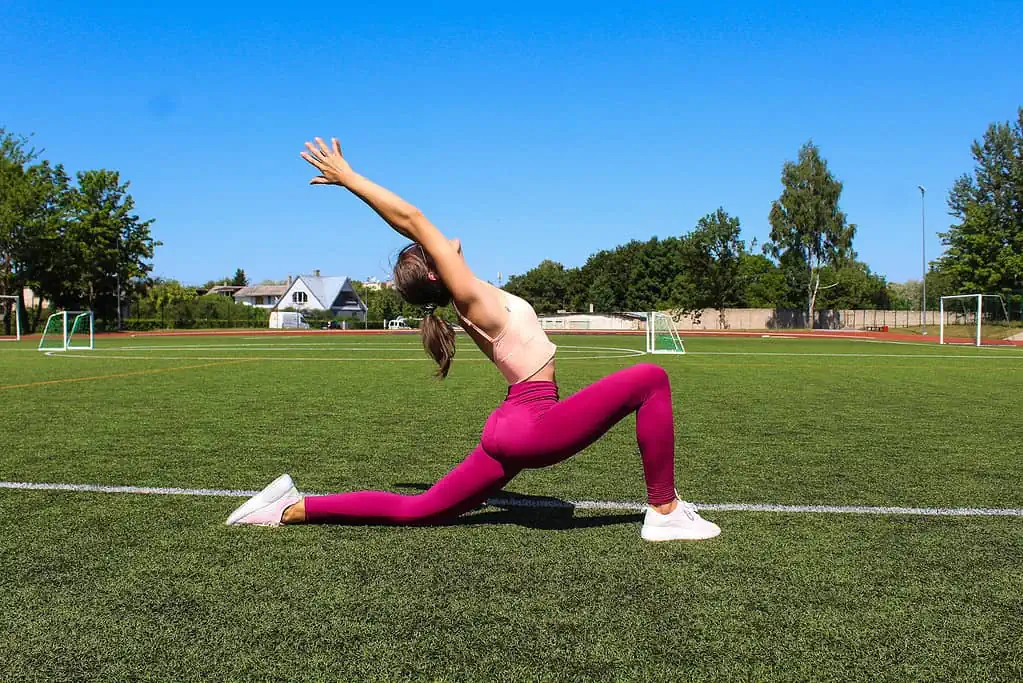
The low lunge is another yoga pose that requires you to put additional weight on one knee. It also involves bringing the other knee into a flexed position, so care and caution are essential when practicing the low lunge.
From a tabletop, step your right foot between your hands with the knee directly above the ankle. Untuck your back toes and engage your core as you straighten your spine and raise your arms alongside your ears.
Half Splits Pose
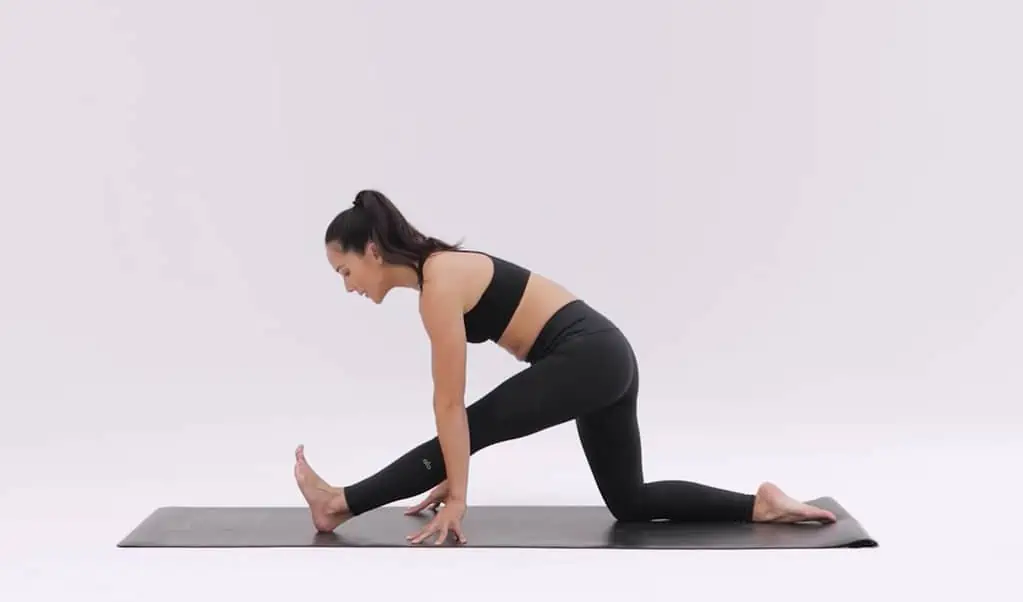
The half-split pose is a lovely hamstring stretch and a preparatory posture for the full splits.
From the low lunge, release your hands to the ground or two blocks on either side of the front foot. Press your hips back to straighten the front leg, and fold your upper body over the thigh. Relax your head and neck and flex the toes towards you to deepen the stretch in the back of the leg.
Gate Pose

The gate pose is a side-bending asana with one knee bent and the other leg extended to the side. It opens the side of the body and stretches the muscles between the ribs, back, and hips while strengthening the ankles and feet.
Extend your right leg out to the side from a kneeling position with the hips lifted. Ensure the toes face forward (in the same direction as the hips), pressing the sole firmly into the ground.
Bring your right hand to the right thigh. As you inhale, reach your left arm up and over, stretching to the right side (the side of the extended leg). Look up at your top arm and breathe into the ribs.
Camel Pose

The camel pose is a deep backbend that stretches the chest, torso, neck, and quads while strengthening the back muscles, thighs, and knees.
Bring your hands to your lower back from a kneeling position with your hips lifted. Slowly lean back as you press the hips forward, creating an arch in the spine. Next, pull your elbows towards each other behind you as you breathe into the chest. A more advanced variation is to bring the hands to the heels.
Boosting Flexibility and Strength with Kneeling Asanas
Kneeling yoga postures serve as a means to enhance both strength and flexibility. However, there’s one aspect that our previous discussion overlooked—the impact these poses can have on muscle development.
Building Strength through Kneeling Asanas
When you assume a kneeling pose, it’s no time for relaxation. Your body engages in a workout. Consider this: poses like the Camel or the Hero elicit a burn in your thighs and core muscles, which ultimately strengthens them.
Unleashing Flexibility
Now let’s delve into the topic of flexibility. Kneeling poses provide stretches that standing poses simply can’t replicate. They effectively target your hips, thighs, and ankles for a release. Over time, this practice gradually enhances your flexibility, leaving you feeling fantastic as those tight spots unwind.
So remember, the time you find yourself in a kneeling pose, it’s not about enduring discomfort; it’s about forging a stronger and more limber version of yourself. Keep at it faithfully. Before you know it, a noticeable transformation will unfold.
Exploring the Psychological Benefits of Kneeling Positions
When we delve into the world of yoga, it’s easy to focus on its aspects. However, there’s a dimension, to it well. Kneeling positions, for example, extend beyond flexibility or strength; they also profoundly impact our well-being. I’ve personally experienced this phenomenon in my practice. It truly captivates me.
The Connection Between Mind and Body
Yoga emphasizes the connection between our minds and bodies. Kneeling positions, with their grounding nature, play a role in enhancing this connection. When you find yourself in a pose like Child’s Pose it goes beyond stretching your body. It creates an opportunity for relaxation too. Each breath taken in that pose seems to clear my mind.
Alleviating Stress and Cultivating Focus
One benefit I’ve discovered is how kneeling positions can alleviate stress levels effectively. They almost compel the world around you to slow down its pace. When I assume a position like Thunderbolt Pose it becomes a moment shared between me and my breaths. This heightened focus can cut through stress like no method I’ve encountered before. It’s truly a tool that deserves recognition.
Facilitating Emotional Release
Here’s something not everyone openly discusses; yoga has the potential to unlock release within us. Kneeling poses in particular seem to open up doors, toward this realm of self-discovery.
Maybe it’s the way these poses make you feel vulnerable or how they allow for breaths. There have been times when I’ve experienced something, like a breakthrough while doing them. It’s quite powerful.
Developing a Practice
Incorporating mindfulness into kneeling poses can enhance your practice significantly. It’s about being fully present in the pose and noticing every sensation. This mindfulness can extend beyond your yoga session. Seep into your life as well. These poses can teach you to be more aware and attentive which is truly valuable in our paced world.
Kneeling poses have layers of benefits. Beyond their effects, they offer a pathway to clarity stress relief, and emotional well-being too. It’s an aspect of yoga that deserves attention and recognition. In my journey these poses have meant more than simple stretches; they’ve provided moments of tranquility, understanding, and, at times even transformation.
Final Thoughts on Yoga Kneeling Pose
Kneeling yoga poses aren’t just painful for yogis with previous knee injuries. It’s common for many people to have sensitive or bony knees, making it significantly uncomfortable to place their body weight over one or both knees.
However, the solution to this problem is pretty simple. Switching to a thicker yoga mat or using a blanket or knee pads can make kneeling poses safer, more enjoyable, and, thus, more beneficial.
Pop quiz! 🧘🤔
Using a thicker yoga mat can alleviate knee discomfort in kneeling poses.
It is safe to extend your knee beyond your toes in a low lunge pose.
Yoga knee pads can only be used in Hero pose for knee support.


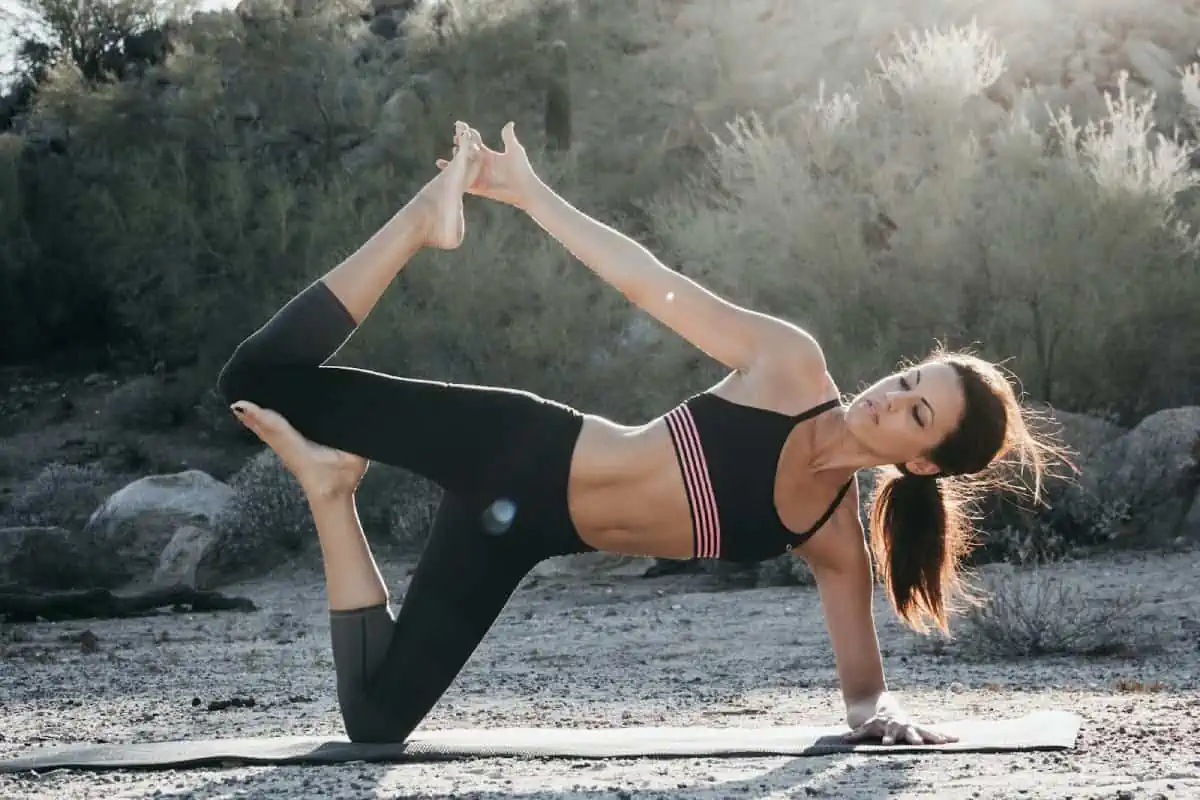





Extremely Informative. It is true that kneeling positions can put significant stress on the knees. The tips and tricks shared in the blog are crucial, as fitness workouts should not cause undue strain on the body. By implementing these techniques, many of us can perform kneeling positions during our home workout sessions without exerting excessive pressure on our knees.